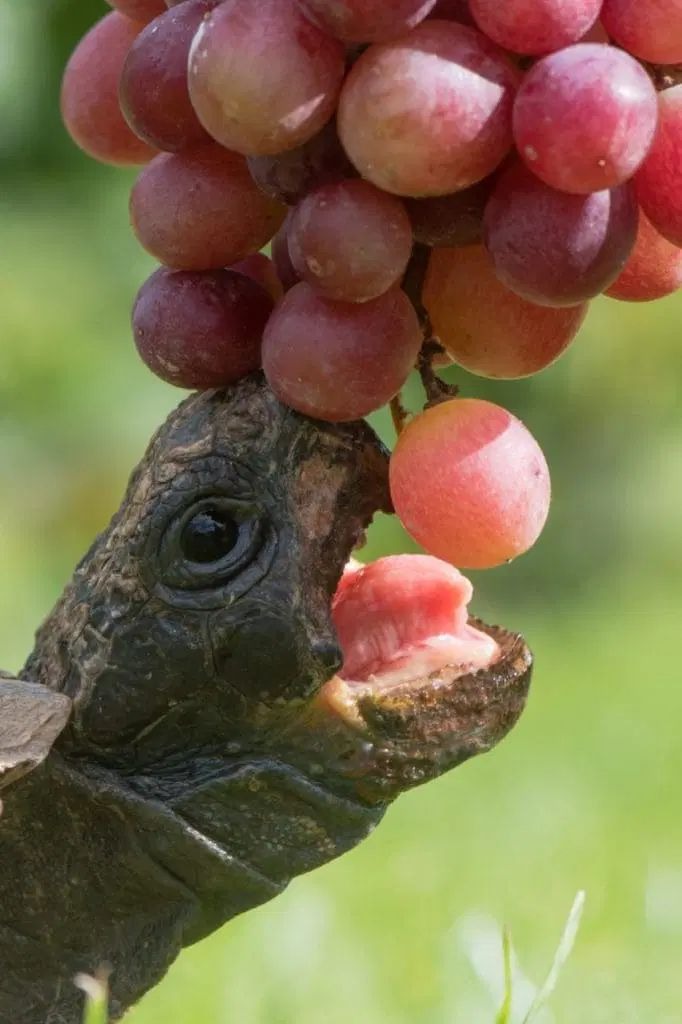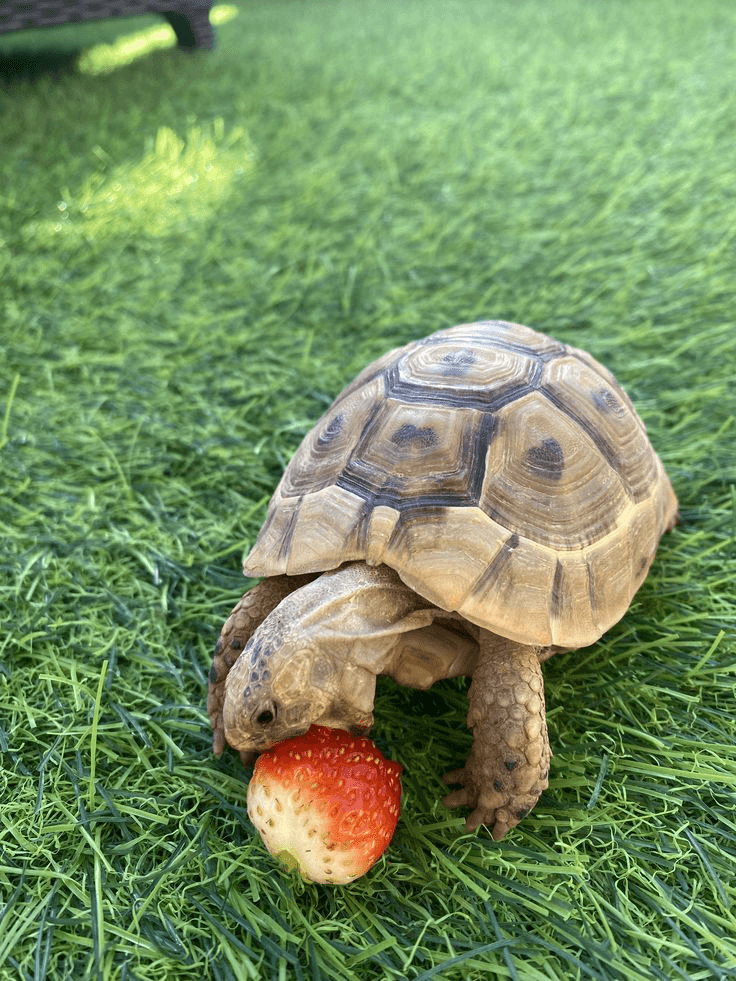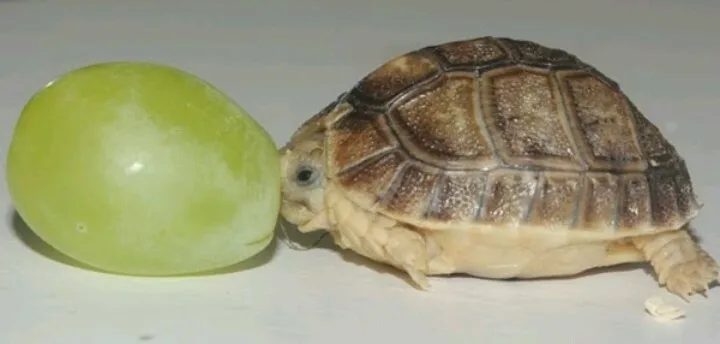In my own fieldwork with turtles and tortoises, I noticed how their connection with grapes isn’t always as straightforward as many assume. These creatures are opportunistic feeders, shifting their diet depending on season, availability, and even age. Some caretakers think that all fruits are equally beneficial, but that overlooks how an ecosystem relies on them as seed dispersers, influencing plant species survival. During summer months, I’ve personally seen an increase in fruit intake among certain turtles, yet if not kept in moderation, even natural foods can become unhealthy for long-term balance.
From an analytical perspective, while observing patterns across roughly 580 individuals during varying reproduction cycles, I noticed that labeling them strictly as omnivore, herbivore, or carnivorous doesn’t capture the nuance of their eating behavior. Grapes, though tempting, should only be given in controlled quantities. Ignoring this reality can turn a seemingly harmless treat into something toxic. Having experimented with feeding schedules myself, I always emphasize that the broader lesson isn’t about eliminating grapes, but about understanding context—how each turtle processes food differently depending on its stage of life and environmental triggers.

Can Turtles Eat Grapes?
Turtles & Grapes / Can Turtles Eat Grapes?
Many turtle owners eventually face the question of whether their shelled companions can enjoy grapes as part of their meals. In my own care routines, I’ve tested offering both red grapes and purple grapes, observing how omnivores in captivity respond. Evidence shows that turtles can eat different varieties, and when used in moderation, the fruit can be considered safe. Some nutritional benefits are present, but so are potential issues linked to overfeeding. The pros and cons appear balanced, making it a treat that carries both healthy aspects and possibly harmful outcomes depending on the feeding tips followed.
From experience, the nutritional data on grapes highlights both benefits and risks, which become more species-specific when applied to different turtles. I’ve noticed that the question often arises in online FAQs, where owners debate whether occasional servings bring more cons than pros. While some keepers emphasize evidence of mild nutritional benefits, others warn that regular use without moderation can cause hidden issues. In truth, the right choice depends on understanding each turtle’s species-specific needs, while balancing grapes with other meals to diversify the diet of our shelled companions responsibly.
Nutritional / Grape Nutritional Information
When I first measured raw grapes for turtle diets, I noted that in 100 grams (about 3.5 oz) they contain nearly 54 g water, which explains why they feel refreshing but not too filling.
The balance tilts with carbohydrates at 18.1 g, paired with sugar 18 grams, which can be a concern if fed too often.
What fascinated me most was how even with minimal fat 0.16 g and a modest protein 0.72 g, these fruits still offer supportive fiber 0.9 g for digestion.
On the mineral side, I checked the calcium 10 mg and phosphorus 20 mg, noticing how the ratio between them connects directly to skeletal health in reptiles.
While not a powerhouse of minerals compared to greens, grapes still bring trace vitamins like Vitamin A, reminding me that they are best viewed as a sweet supplement rather than a daily staple.

Potential Health Benefits of Feeding Grapes to Turtles
In my years of observing different species, I’ve noticed that the health benefits of grapes often come through their natural vitamins and minerals, though only in a small amount compared to greens. While some keepers focus on nutritional downsides, I find that using grapes as an occasional treat provides quick hydration, especially for terrestrial turtles like the ornate box turtle that sometimes show signs of thirst. When included with foods such as leafy greens and balanced fruits, the contribution may represent around 15% of overall dietary intake, supporting a sense of dietary freedom and helping shape a more varied diet without relying too heavily on a single item.
Potential Risks of Feeding Grapes to Turtles
From practical experience, I’ve seen that the risks of grapes can outweigh the benefits if offered too freely, especially for young turtles that require more protein and less fat to grow steadily. An obese turtle, with poor calcium to phosphorus balance, may even face metabolic bone disease affecting the shell, as oxalates in grapes can interfere with nutrient absorption. This creates a clear health risk when there’s excess or overconsumption of sweet fruits, which can trigger diarrhea and other digestive issues due to the high sugar content. On one reptile forum, keepers often reminded each other that grapes should remain a rare treat, not a staple.
I also advise being mindful of fruit grown for humans, since the peel may carry residues if proper cleaning is skipped. Offering grapes in a thin slice keeps the digestive system from straining and prevents leftover food from clouding the tank. While it’s tempting to indulge turtles, you should never overdo these offerings, as moderation keeps their diet safe and sustainable.
Best Way / How to Introduce Grapes Into Turtle Diet
When I first experimented with fresh grapes, I quickly realized that offering raw grapes is safer than any processed grape products, as additives pose risks. Always wash them thoroughly, then chop into small pieces that match the turtle’s mouth size before you serve. It’s crucial to remove any uneaten portions within 4 hours, since fruit spoils fast in warm enclosures. Avoid seeds and tough skin to ensure the snack remains safe and easy to digest.
Still, feeding frequency depends on guidance from a vet, as each species, age, and health profile differs. I always suggest offering in smaller quantities, avoiding daily feeding, because too much can be dangerous. Ignoring this risks choking or later indigestion, which I’ve unfortunately witnessed in rescue cases where keepers didn’t moderate. Grapes should complement a balanced diet, never dominate it.

Final Thoughts / Summary & Conclusion
After years of observing different species, I’ve found that while fruits like grapes can be safe for both omnivorous turtles and herbivorous turtles, the nutritional benefits always come paired with certain downsides. The key is strict moderation, along with periodic advice from a trusted veterinarian. Since grapes are high in sugar and often disrupt the calcium-to-phosphorus ratio, they shouldn’t dominate meals. Instead, choosing toxic-free options such as seedless grapes, given only once a week, helps keep the diet balanced and safe for long-term health.
FAQs About Turtles and Grapes
Nutritional / Grape Nutritional Information
Q: What nutrients are found in raw grapes for turtles?
A: In raw grapes, every 100 grams (3.5 oz) contains about 54 g water, 18.1 g carbohydrates, 0.16 g fat, and 0.72 g protein. They also provide 0.9 g fiber, 10 mg calcium, 20 mg phosphorus, several vitamins including Vitamin A, and other minerals, but with sugar at 18 grams, the ratio of nutrients doesn’t strongly support long-term skeletal health.
Turtles & Grapes / Can Turtles Eat Grapes?
Q: Can turtles and tortoises eat grapes?
A: Yes, grapes are generally not toxic to turtles or tortoises, but in the ecosystem they serve more as occasional fruits eaten by opportunistic feeders than as staples. Many plant species (about 580) rely on animals as seed dispersers, but in captivity, a turtle’s diet depends on season, availability, fruit intake, and even reproduction cycles. Whether omnivore, herbivore, or carnivorous, a turtle’s age determines how much can be safely offered, and only in moderation and small quantities to avoid unhealthy outcomes.
Q: Can turtles eat grapes and are they safe in captivity?
A: Many turtle owners ask this question when trying to diversify their shelled companions’ meals. The truth is, grapes can be safe for turtles and even provide some nutritional benefits, especially for omnivores in captivity. Both red grapes and purple grapes have varieties that may appear healthy, yet can also be harmful with too much feeding. The key is moderation, weighing pros and cons to avoid overfeeding issues. Always check the evidence, nutritional data, benefits, and risks, follow feeding tips, and remember species-specific FAQs are essential.
Potential Health Benefits of Feeding Grapes to Turtles
Q: What health benefits do grapes provide turtles?
A: Grapes can offer health benefits by supplying trace vitamins and minerals, though only in a small amounts. While there are some nutritional downsides, using grapes as a treat can help with hydration, especially for terrestrial turtles like the ornate box turtle. They contribute to dietary freedom, diversify foods and fruits, and may account for around 15% of dietary intake, supporting a varied diet when rotated with healthier staples.
Potential Risks of Feeding Grapes to Turtles
Q: What are the risks of feeding grapes to turtles?
A: The risks come when keepers overlook balance. For young turtles, excess grapes may reduce protein intake, add too much fat, and even make them obese. Poor calcium and phosphorus balance can cause metabolic bone disease, weakening the shell. Grapes contain oxalates that block absorption, raising the health risk of excess or overconsumption. Sweet fruits often trigger diarrhea, digestive issues, or spikes in sugar. On many forums, hobbyists agree grapes should be a rare treat, especially since fruit grown for humans may carry residues on the peel if cleaning is skipped. Always serve in a thin slice, avoid dirtying the tank, and never overdo feeding.
Best Way / How to Introduce Grapes Into Turtle Diet
Q: How should grapes be prepared and introduced into a turtle’s diet?
A: Start with fresh grapes or raw grapes, not processed grape products. Wash thoroughly, then chop into small pieces that fit the mouth size. Serve and then remove any uneaten pieces within 4 hours before the fruit spoils. Always exclude seeds and skin to keep it safe. The correct feeding frequency depends on vet advice and varies by species, age, and health. Stick to smaller quantities to avoid daily feeding, since too much is dangerous. Overfeeding increases the chances of choking or indigestion.
Final Thoughts / Summary & Conclusion
Q: What’s the final verdict on grapes for turtles?
A: Grapes are fruits that can be safe in limited amounts for both omnivorous turtles and herbivorous turtles. Their nutritional benefits exist, but so do the downsides. The solution is moderation and professional guidance from a veterinarian. Because of high sugar and the poor calcium-to-phosphorus ratio, they should never be staples. Instead, choose toxic-free seedless grapes, given once a week, to keep the overall diet balanced.
How do grapes affect the diet of turtles?
Q: What impact do grapes have on turtle health?
A: Grapes add some vitamins, minerals, and quick hydration, but their sugar content can harm turtle health if overfed. The dietary impact is mostly supplemental rather than essential.
What about baby turtles?
Q: Can baby turtles or juveniles eat grapes?
A: For baby turtles and juveniles, keepers should exercise caution. While they can taste grapes, frequent feeding may stunt growth or upset digestion.
Are grapes safe for all turtle species?
Q: Do all turtle species tolerate grapes in their diet?
A: While grapes aren’t generally toxic, not every turtle species should eat them. Different dietary niches matter: fruit may suit omnivorous or herbivorous turtles, but carnivorous types rarely tolerate them. Always align with the species’ diet, since young turtles are more sensitive to fruit overfeeding which can harm their growth. Always verify species requirements.
How many grapes can a turtle eat per week?
Q: What is the safe serving size for grapes?
A: Most keepers agree grapes should be limited to about 25–30 grams per week. On reptile hubs like WildestPets forum, many suggest just 1 grape, sliced, offered occasionally, not as regular feeding. The exact amount depends on species, size, age, and vet advice.
Can turtles eat the skin or seeds of grapes?
Q: Should grape skin or seeds be given to turtles?
A: Although grape skin may be safe, seeds should be avoided. They pose risks of choking, indigestion, or internal blockages. Safer options are seedless grapes or removing seeds before feeding.
What to do if a turtle eats too many grapes or shows a negative reaction?
Q: How should I respond if overfeeding happens?
A: If your turtle eats too many grapes and shows a negative reaction, immediately monitor for diarrhea or digestive upset. Stop feeding grapes, and if symptoms persist, consult a vet promptly.
What’s the best way to prepare grapes for turtles?
Q: How should grapes be served to turtles?
A: Always wash thoroughly, then chop into bite-size pieces. Remove uneaten portions within 4 hours. Stick to fresh, raw options and avoid processed grape products like juice or jam.